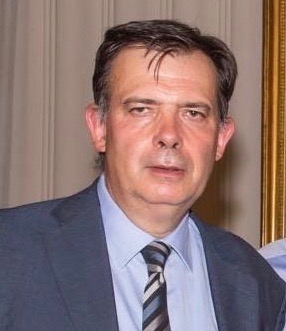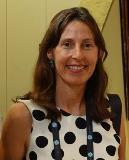Studying at the University of Verona
Here you can find information on the organisational aspects of the Programme, lecture timetables, learning activities and useful contact details for your time at the University, from enrolment to graduation.
Academic calendar
The academic calendar shows the deadlines and scheduled events that are relevant to students, teaching and technical-administrative staff of the University. Public holidays and University closures are also indicated. The academic year normally begins on 1 October each year and ends on 30 September of the following year.
Course calendar
The Academic Calendar sets out the degree programme lecture and exam timetables, as well as the relevant university closure dates..
| Period | From | To |
|---|---|---|
| I sem. | Oct 2, 2017 | Jan 31, 2018 |
| II sem. | Mar 1, 2018 | Jun 15, 2018 |
| Session | From | To |
|---|---|---|
| Sessione invernale d'esame | Feb 1, 2018 | Feb 28, 2018 |
| Sessione estiva d'esame | Jun 18, 2018 | Jul 31, 2018 |
| Sessione autunnale d'esame | Sep 3, 2018 | Sep 28, 2018 |
| Session | From | To |
|---|---|---|
| Sessione di laurea estiva | Jul 12, 2018 | Jul 12, 2018 |
| Sessione autunnale di laurea | Oct 19, 2018 | Oct 19, 2018 |
| Sessione di laurea invernale | Mar 14, 2019 | Mar 14, 2019 |
| Period | From | To |
|---|---|---|
| Christmas break | Dec 22, 2017 | Jan 7, 2018 |
| Easter break | Mar 30, 2018 | Apr 3, 2018 |
| Patron Saint Day | May 21, 2018 | May 21, 2018 |
| VACANZE ESTIVE | Aug 6, 2018 | Aug 19, 2018 |
Exam calendar
Exam dates and rounds are managed by the relevant Science and Engineering Teaching and Student Services Unit.
To view all the exam sessions available, please use the Exam dashboard on ESSE3.
If you forgot your login details or have problems logging in, please contact the relevant IT HelpDesk, or check the login details recovery web page.
Should you have any doubts or questions, please check the Enrollment FAQs
Academic staff

Vallini Giovanni
 giovanni.vallini@univr.it
giovanni.vallini@univr.it
 045 802 7098; studio dottorandi: 045 802 7095
045 802 7098; studio dottorandi: 045 802 7095
 riccardo.velasco@univr.it
riccardo.velasco@univr.it
Study Plan
The Study Plan includes all modules, teaching and learning activities that each student will need to undertake during their time at the University.
Please select your Study Plan based on your enrollment year.
1° Year
| Modules | Credits | TAF | SSD |
|---|
One course to be chosen among the followingOne course to be chosen among the following2° Year activated in the A.Y. 2018/2019
| Modules | Credits | TAF | SSD |
|---|
One course to be chosen among the following| Modules | Credits | TAF | SSD |
|---|
One course to be chosen among the followingOne course to be chosen among the following| Modules | Credits | TAF | SSD |
|---|
One course to be chosen among the followingLegend | Type of training activity (TTA)
TAF (Type of Educational Activity) All courses and activities are classified into different types of educational activities, indicated by a letter.
Bioinformatics and Protein engineering (2017/2018)
The teaching is organized as follows:
Learning outcomes
This course gives an introduction to molecular computational biology and to the rational design of proteins using computational techniques. The arguments of the course include: molecular dynamis simulation techniques and advanced protein bioinformatics concepts.
At the end of the course the student should be able to:
- Deep and critical understanding of a scientific article where computational techniques are used
- Introduce (in silico) mutants able to affect the protein structure and/or function
- Prepare and run molecular dynamics simulations.
Program
Part A – Bioinformatics
− Advanced Structural Bioinformatics
- Thermodynamic basis of the stability of folded biomolecular structure
− Molecular basis of human perception
Part B – Molecular Modeling
− Basic elements of molecular modeling
− Electrostatic modeling
− Energy minimization based on force fields
− Molecular dynamics: solution by using the open source NAMD and/or Gromacs codes
− Conformational analysis
Part C – Ligand-protein interactions
− Protein assembly (protein-protein complexes, protein-protein interactions in protein dimers, crystals): protein-protein docking algorithms and programs
− Ligand Protein interaction: docking algorithms and programs
− Projects: Drug and/or protein design
Bibliography
| Author | Title | Publishing house | Year | ISBN | Notes |
|---|---|---|---|---|---|
| Stefano Pascarella e Alessandro Paiardini | Bioinformatica | Zanichelli | 2011 | 9788808062192 | |
| Frishman, D., Valencia, Alfonso | Modern Genome Annotation | Springer | 2008 |
Examination Methods
The examination is divide in two parts: the first consists in the presentation (in groups) of a scientific article in which state of the arte techniques are used.
The second part is a written examination with open questions regarding the arguments of the course.
Type D and Type F activities
Modules not yet included
Career prospects
Module/Programme news
News for students
There you will find information, resources and services useful during your time at the University (Student’s exam record, your study plan on ESSE3, Distance Learning courses, university email account, office forms, administrative procedures, etc.). You can log into MyUnivr with your GIA login details: only in this way will you be able to receive notification of all the notices from your teachers and your secretariat via email and soon also via the Univr app.
Graduation
Deadlines and administrative fulfilments
For deadlines, administrative fulfilments and notices on graduation sessions, please refer to the Graduation Sessions - Science and Engineering service.
Need to activate a thesis internship
For thesis-related internships, it is not always necessary to activate an internship through the Internship Office. For further information, please consult the dedicated document, which can be found in the 'Documents' section of the Internships and work orientation - Science e Engineering service.
Final examination regulations
List of theses and work experience proposals
| theses proposals | Research area |
|---|---|
| Dinamiche della metilazione del DNA e loro contributo durante il processo di maturazione della bacca di vite. | Various topics |
| Miglioramento del profilo nutrizionale e funzionale di sfarinati di cereali mediante fermentazione con batteri lattici | Various topics |
| Risposte trascrittomiche a sollecitazioni ambientali in vite | Various topics |
| Studio delle basi genomico-funzionali del processo di embriogenesi somatica in vite | Various topics |
Attendance
As stated in the Teaching Regulations for the A.Y. 2022/2023, attendance is not mandatory. However, professors may require students to attend lectures for a minimum of hours in order to be able to take the module exam, in which case the methods that will be used to check attendance will be explained at the beginning of the module.















